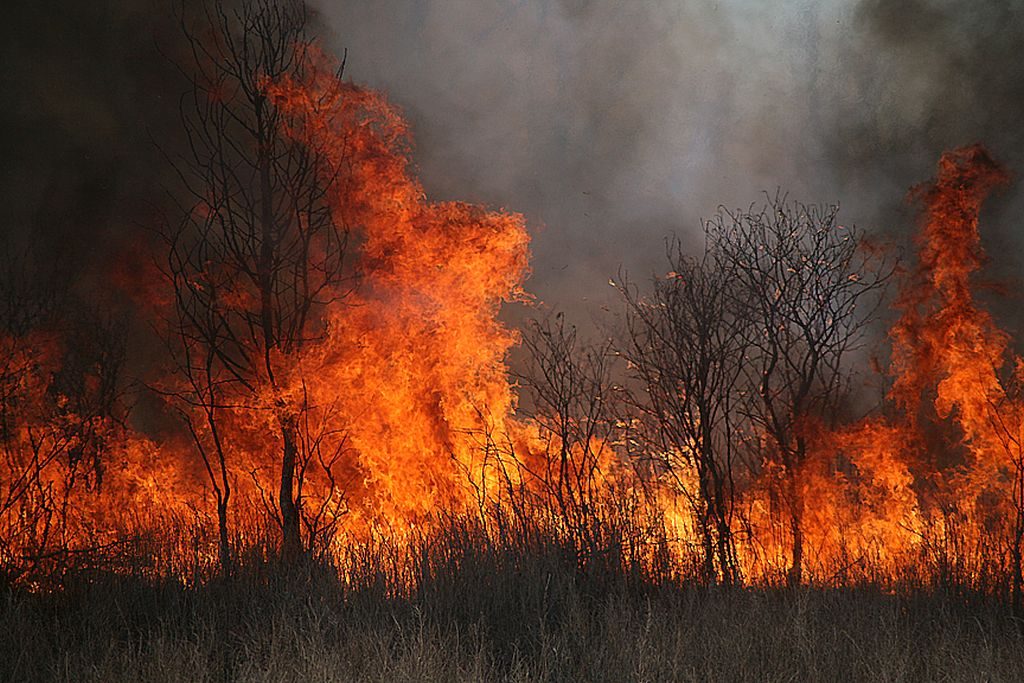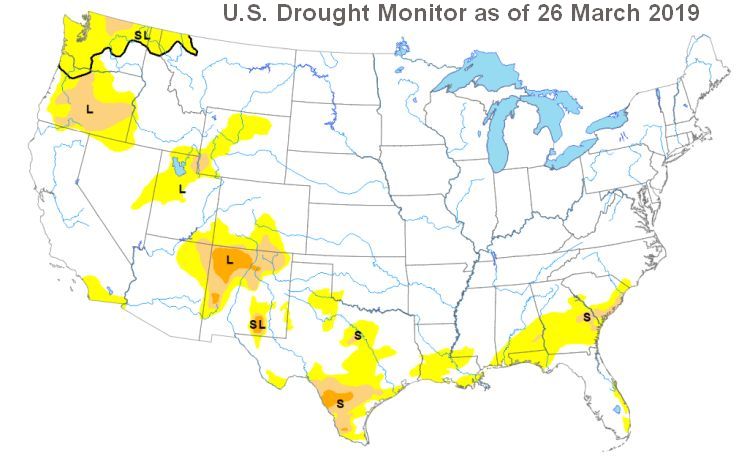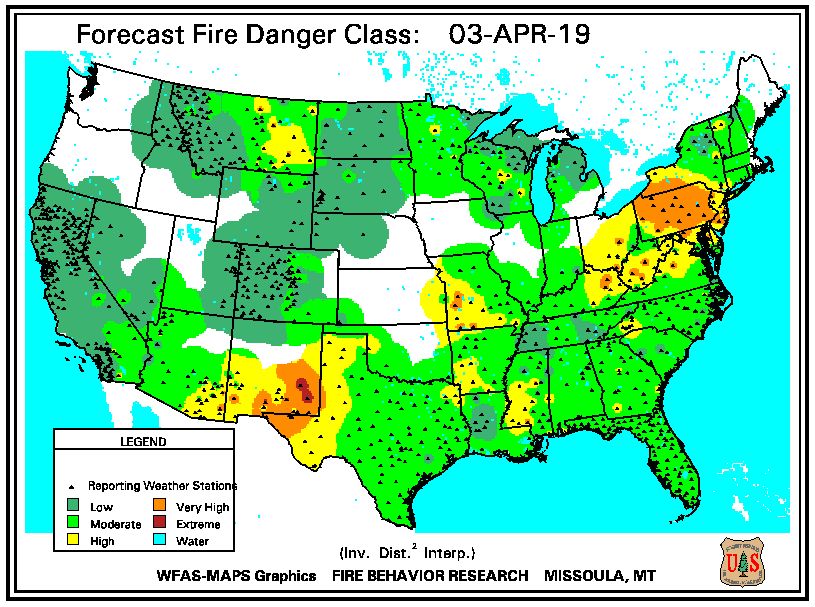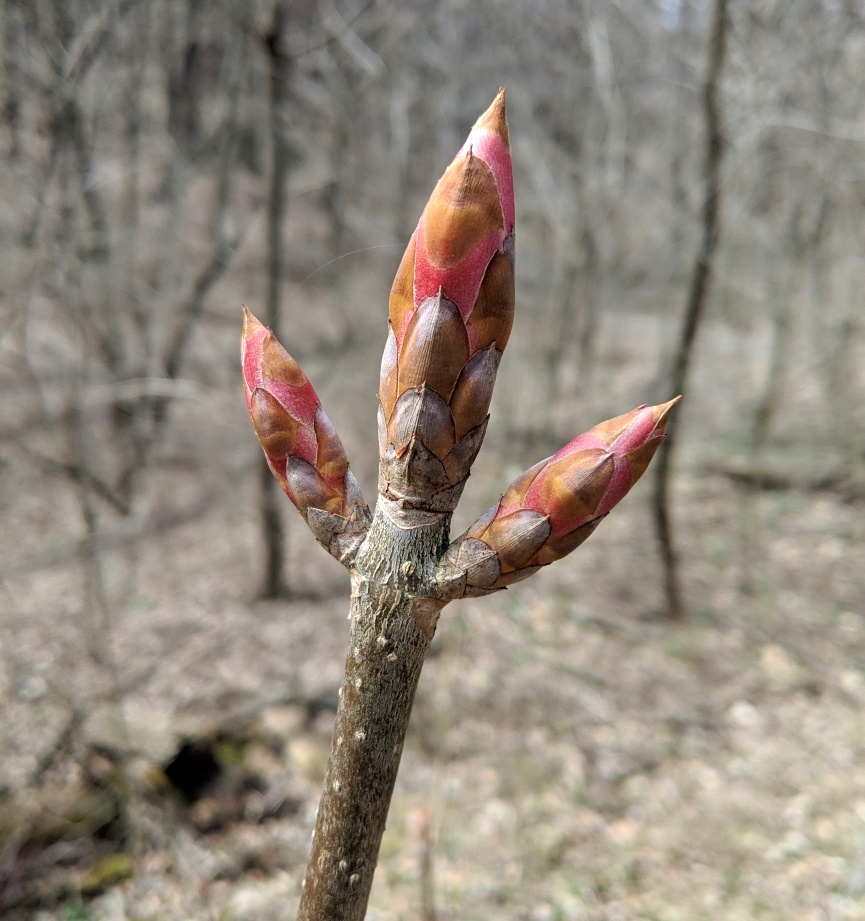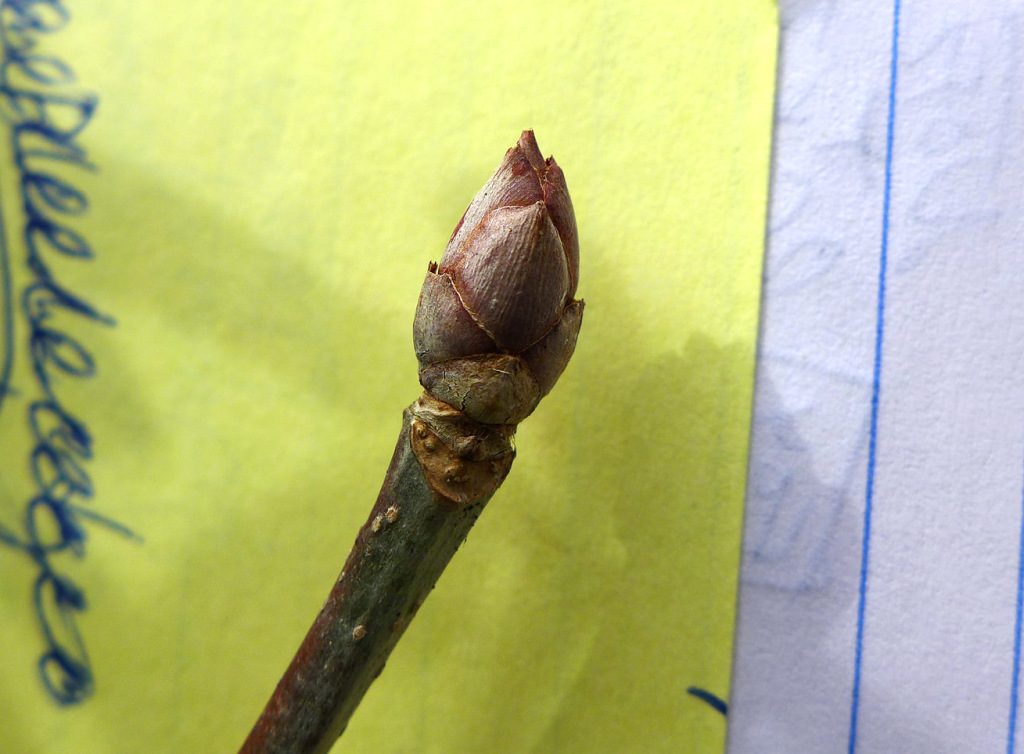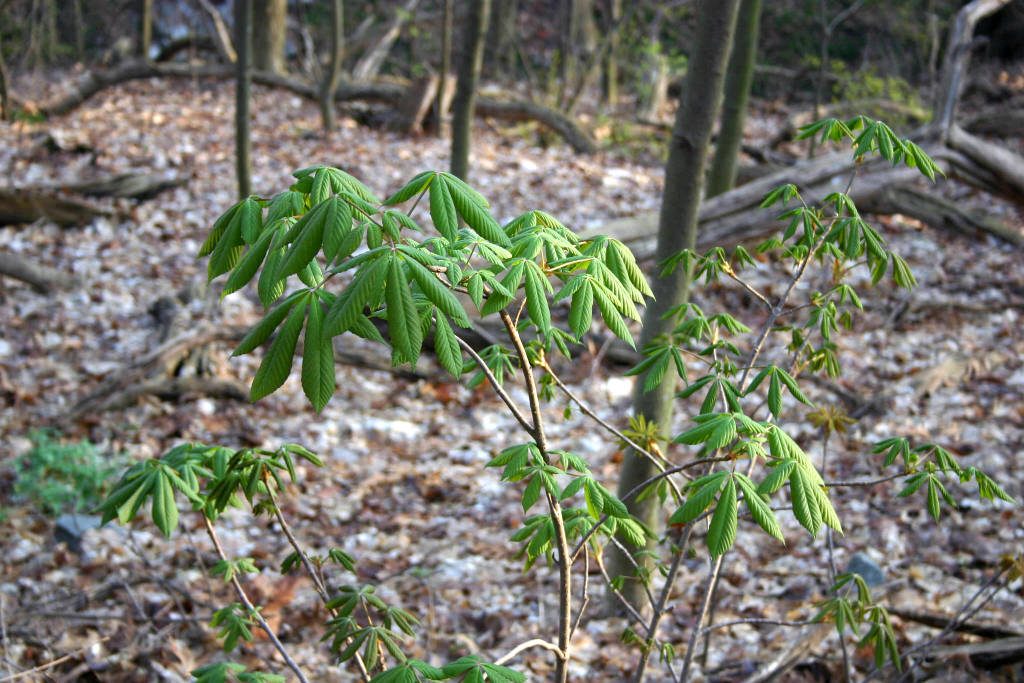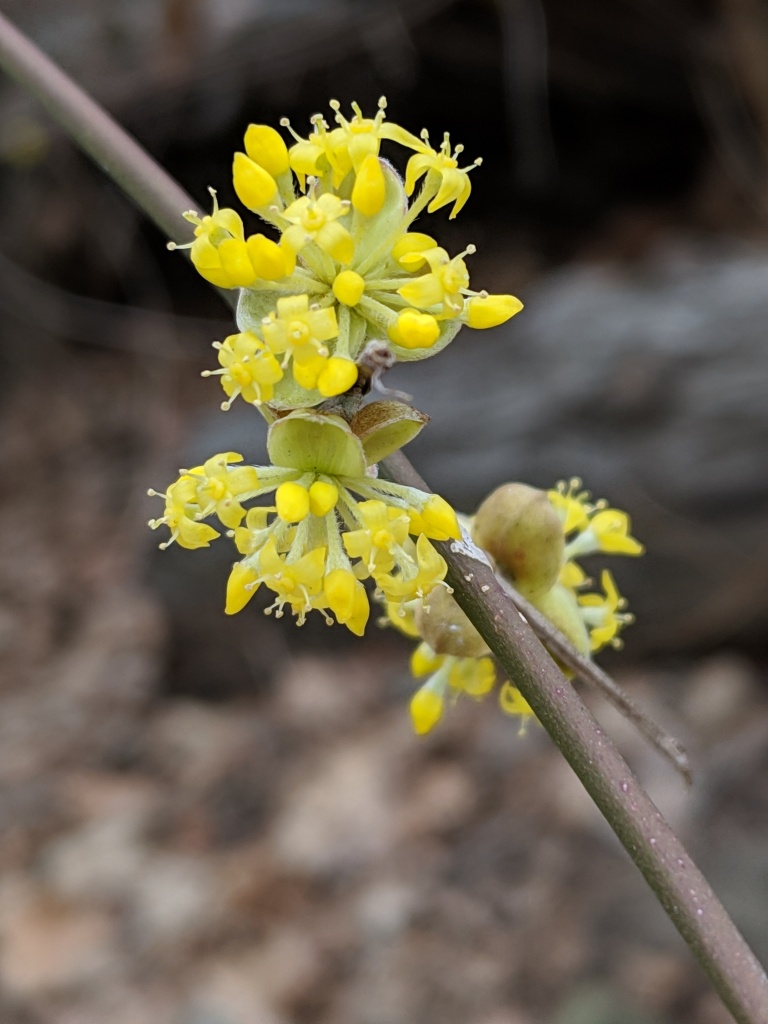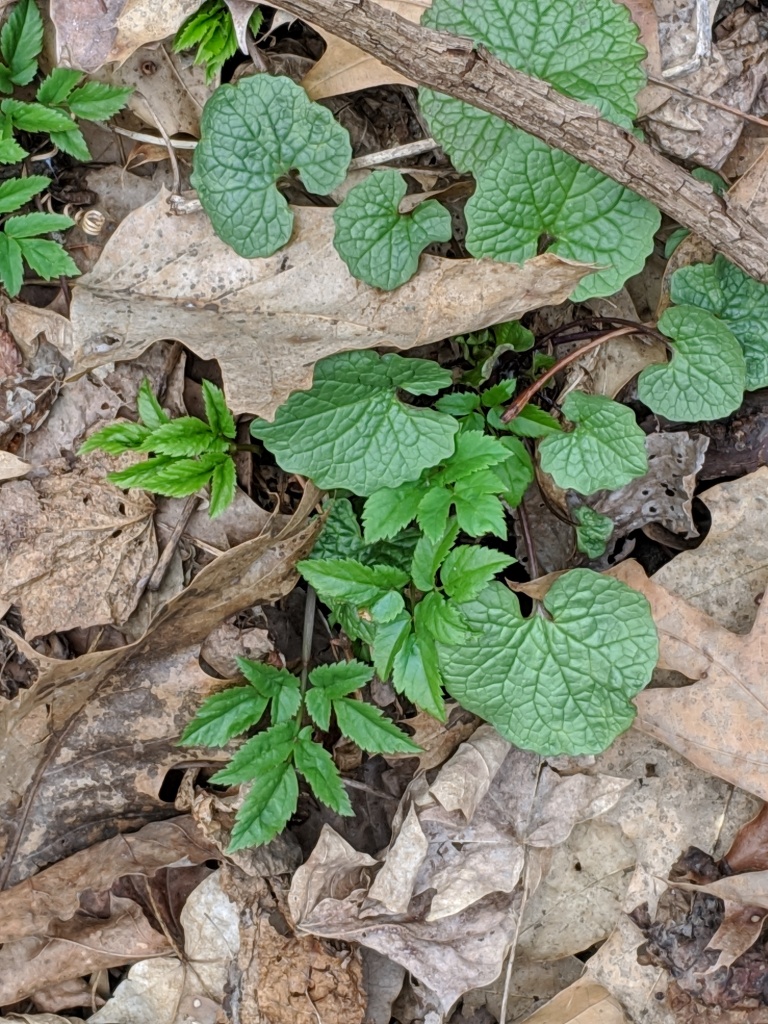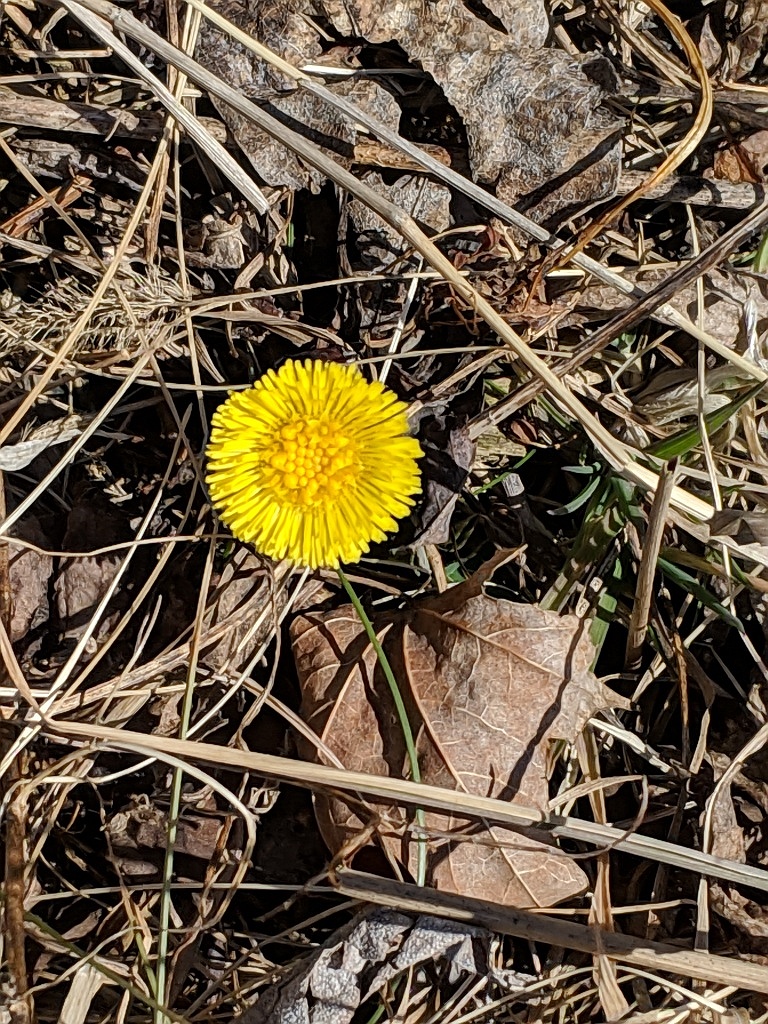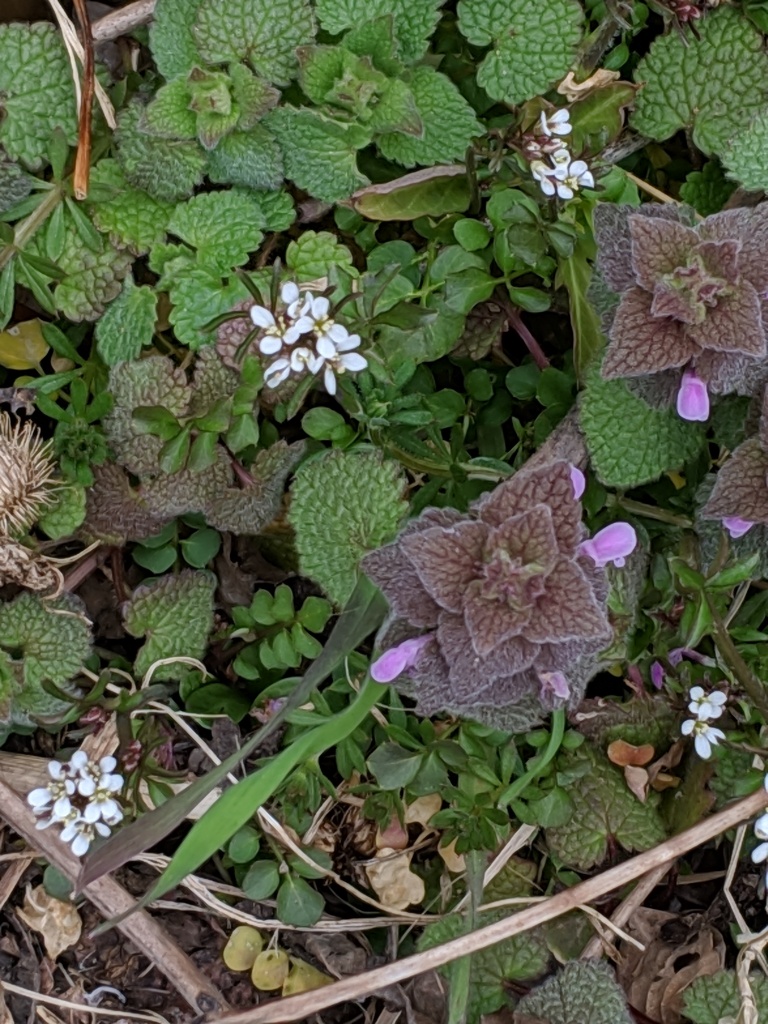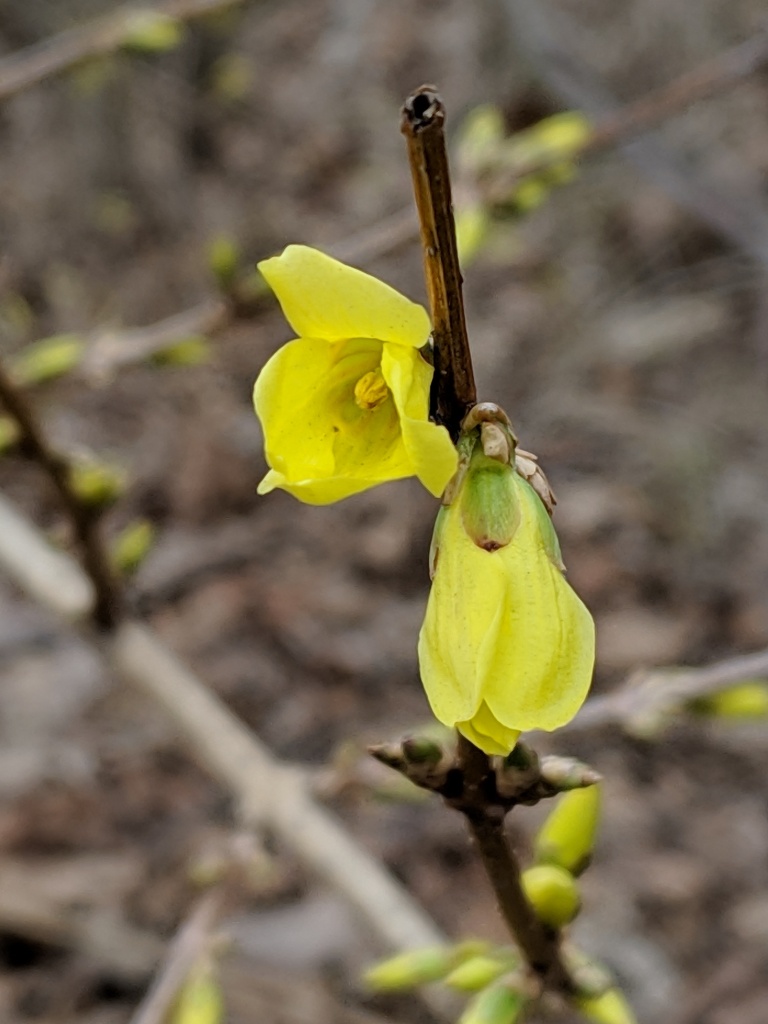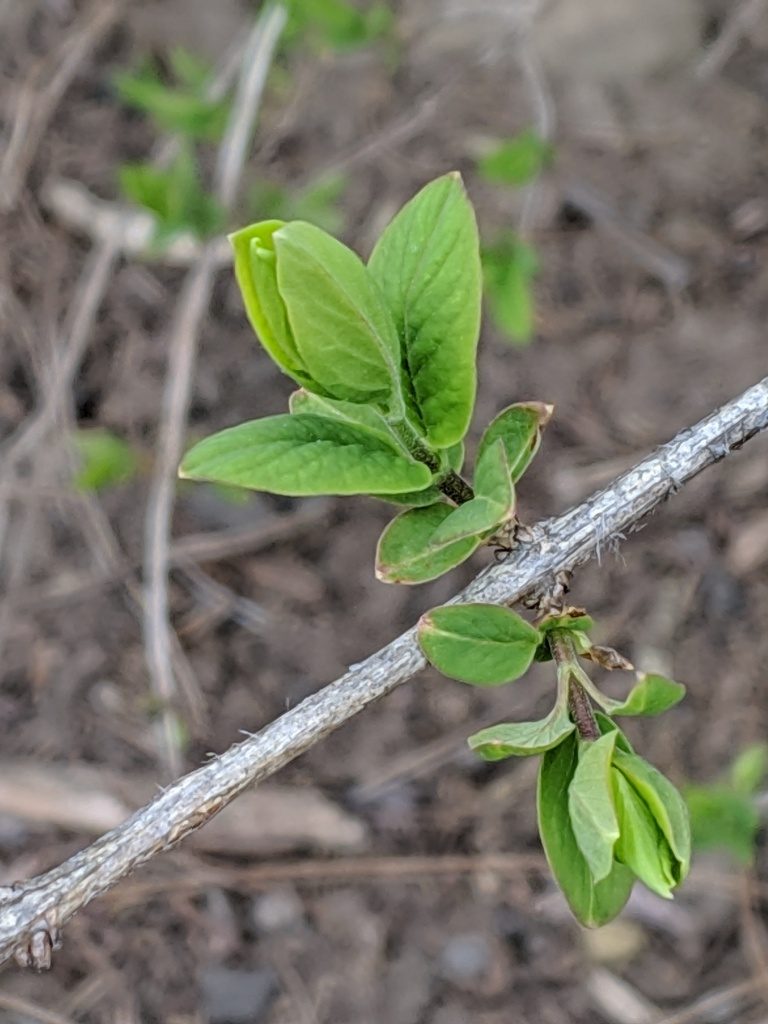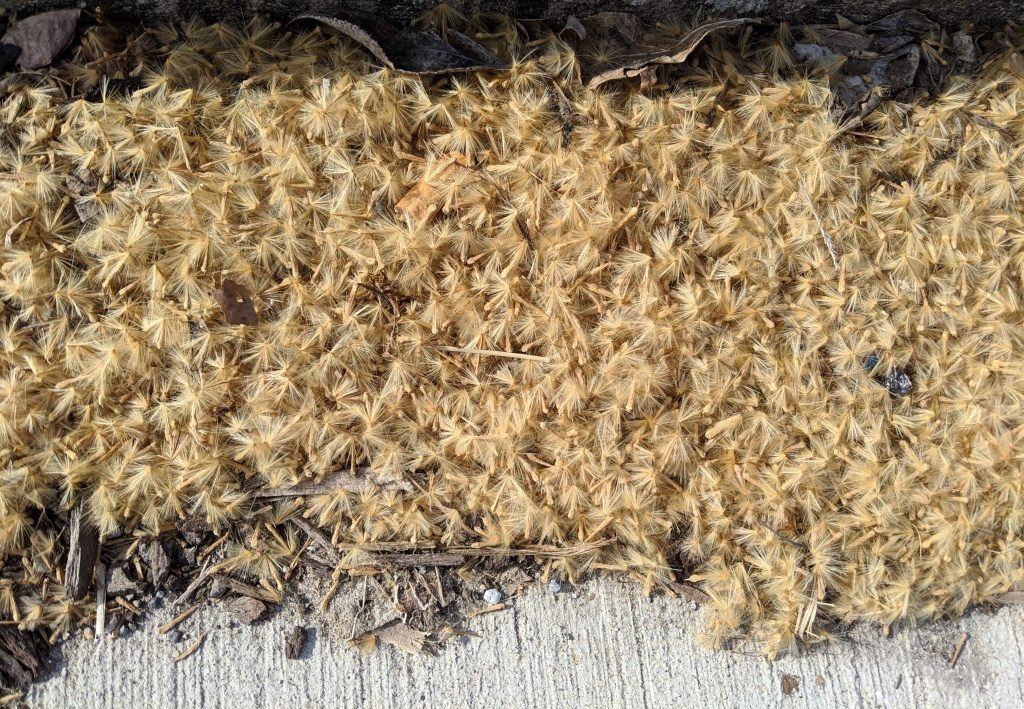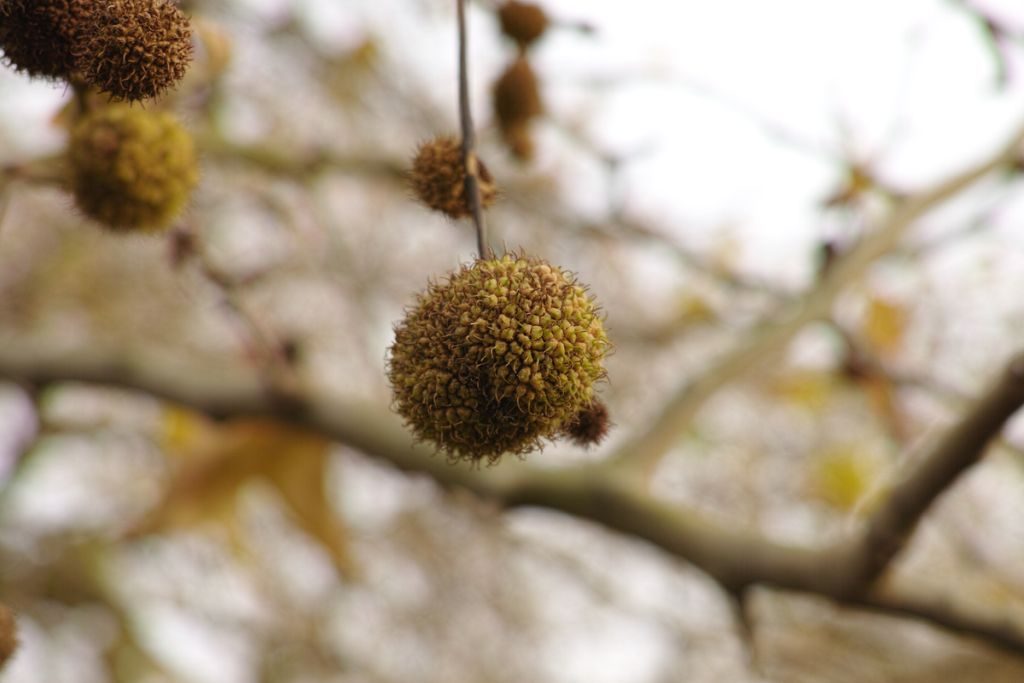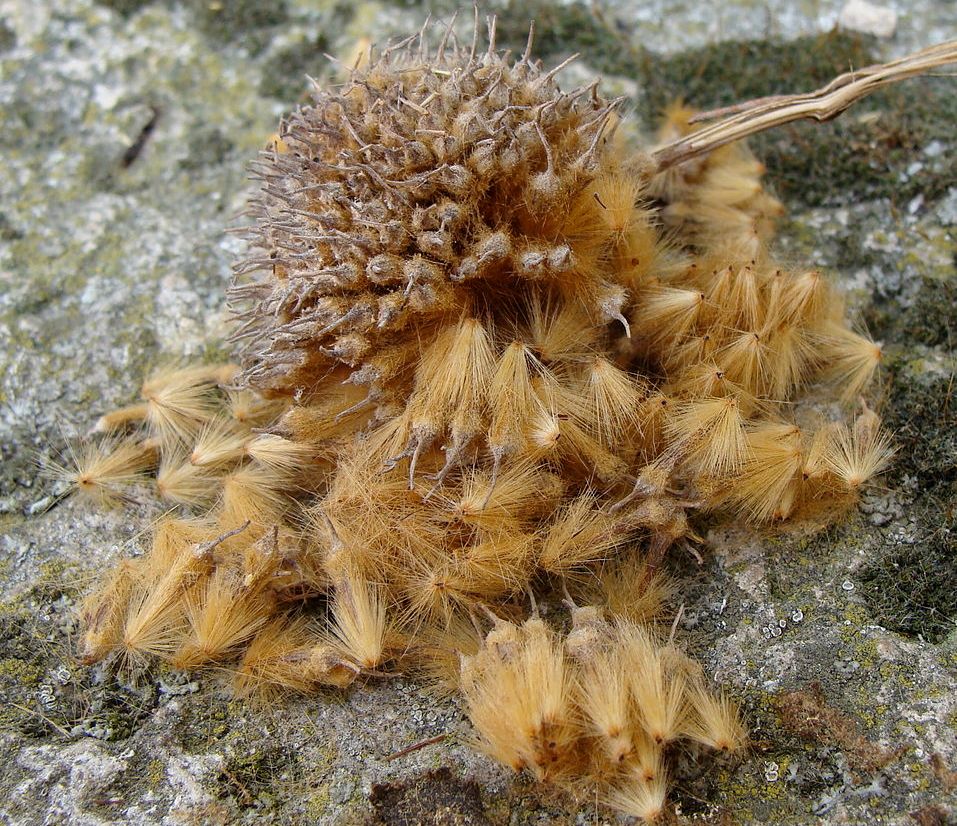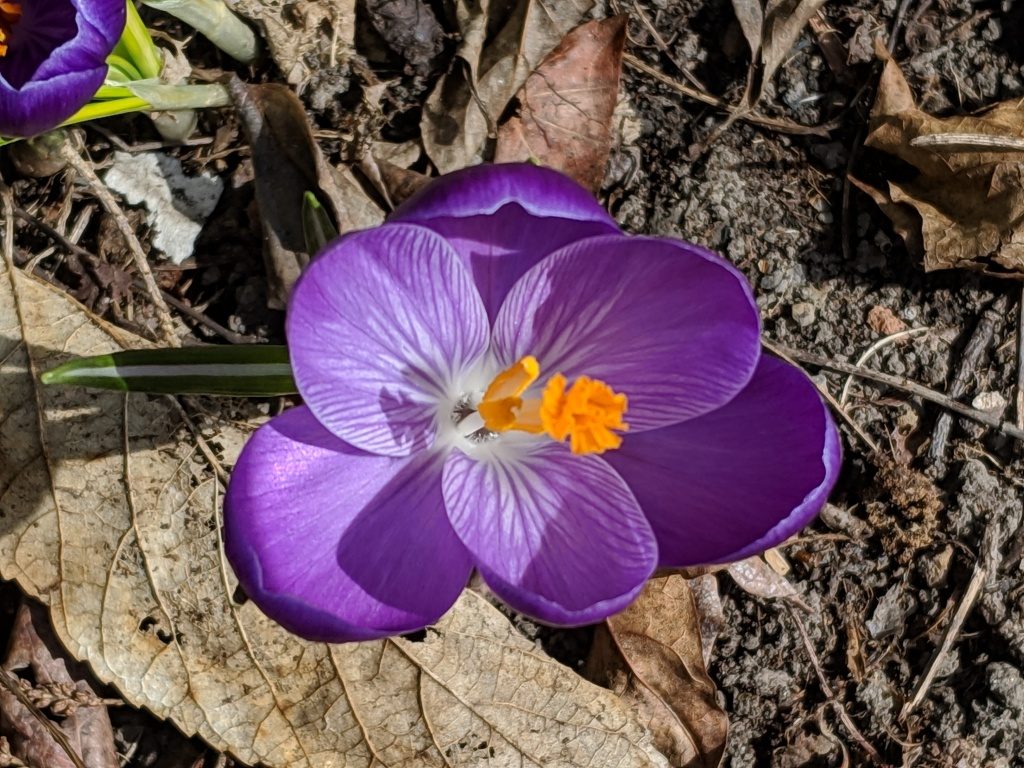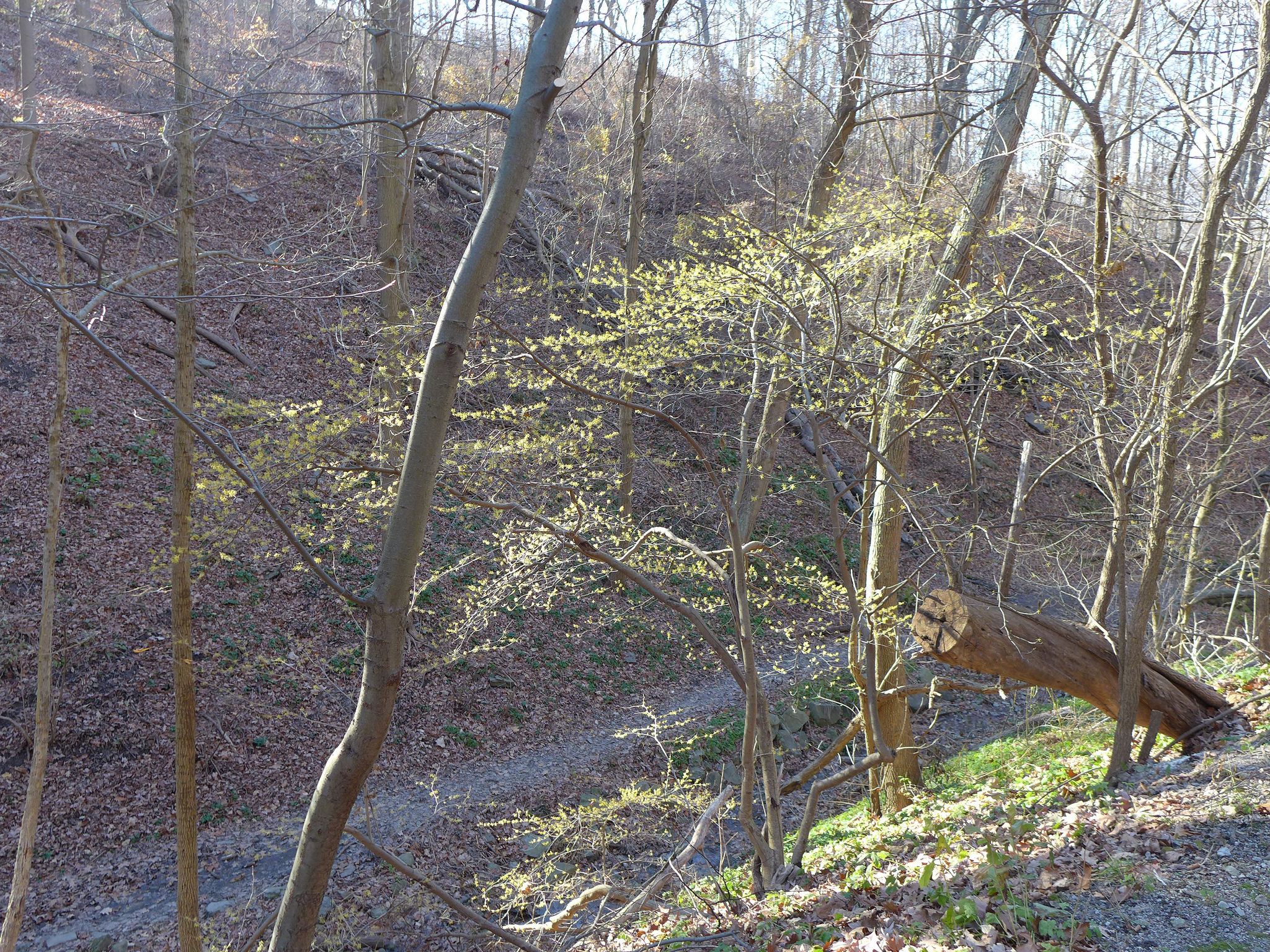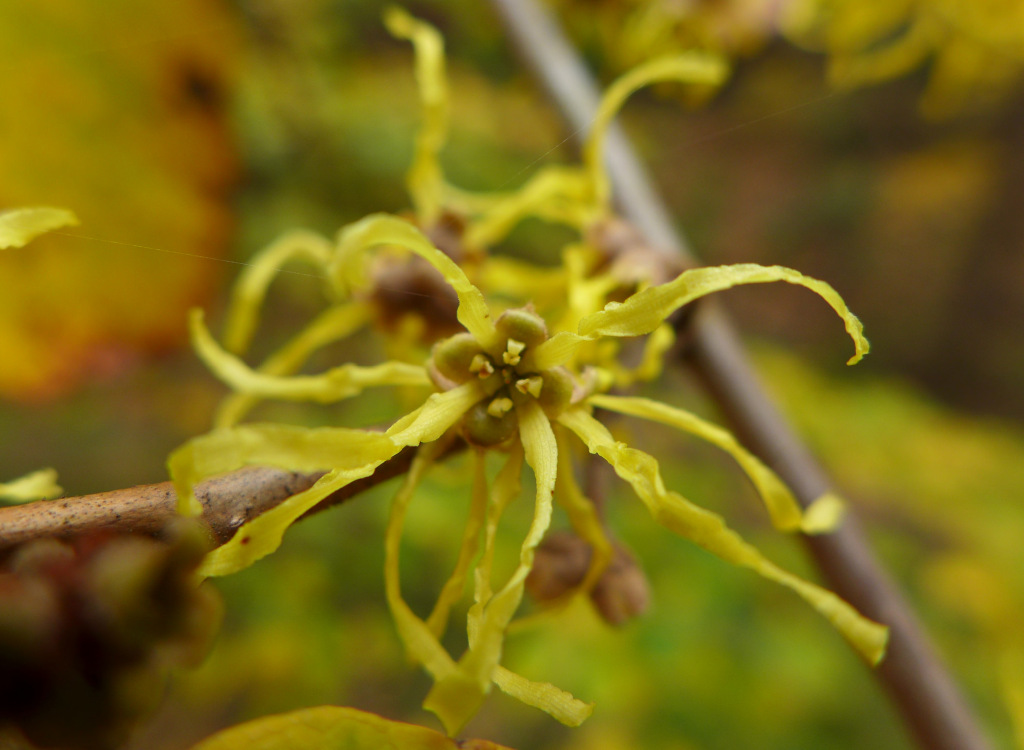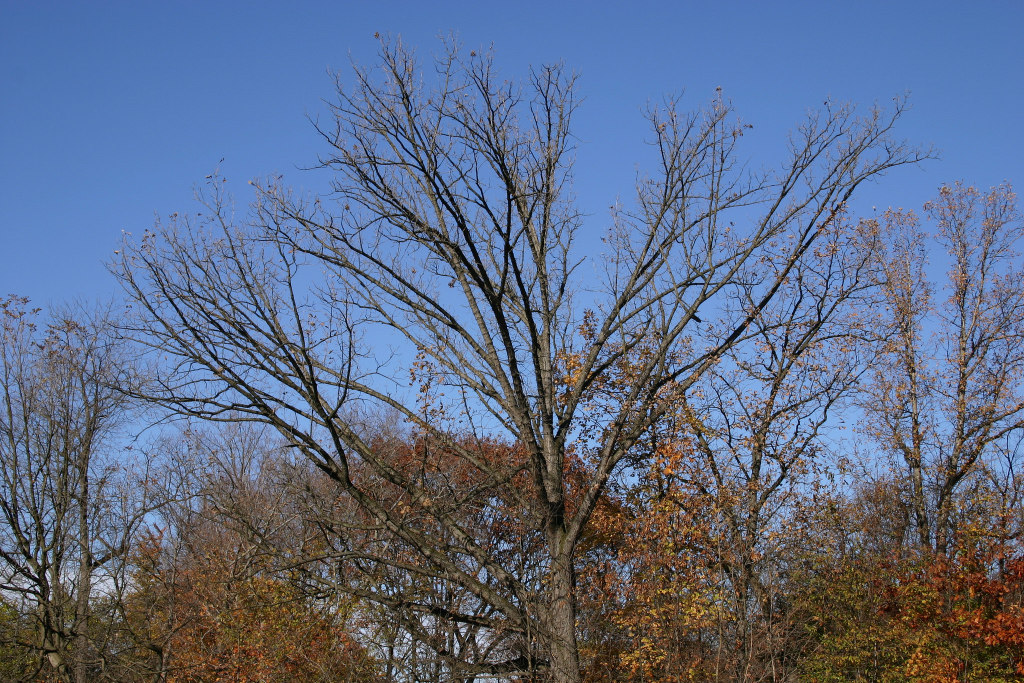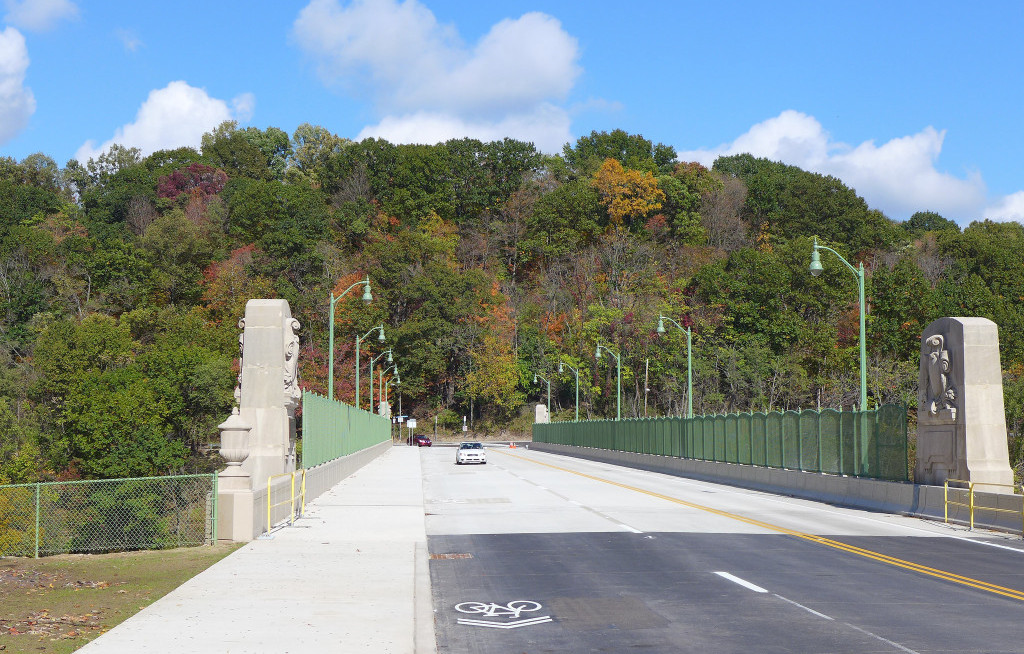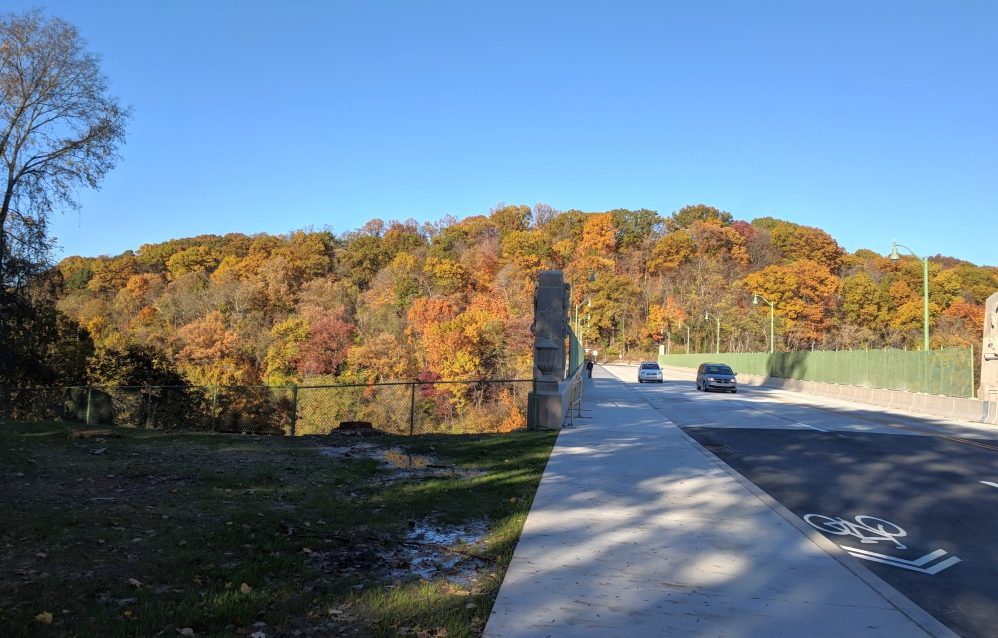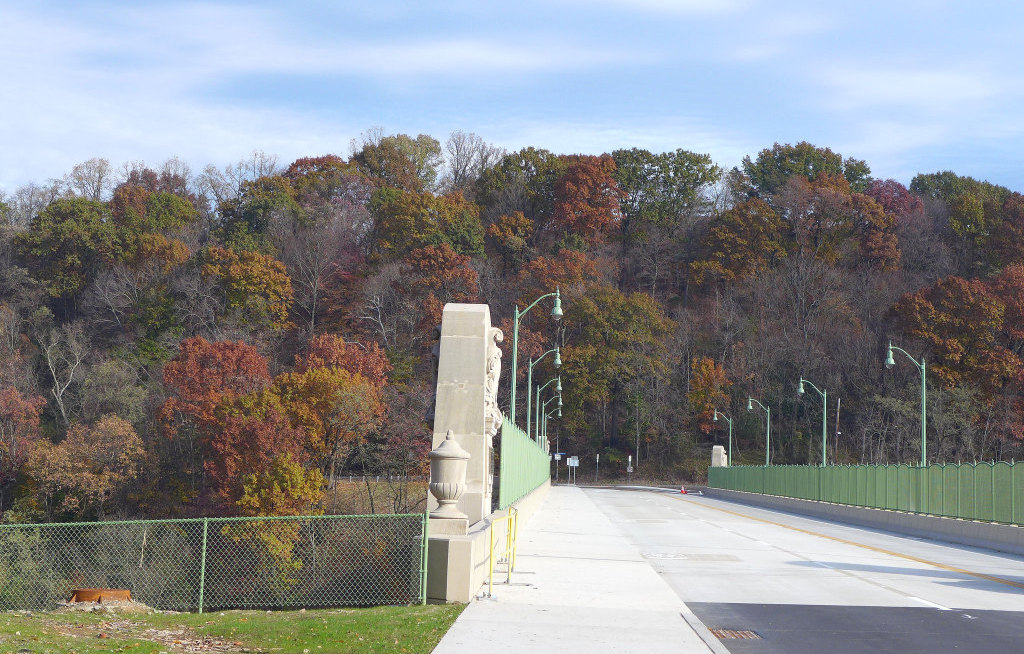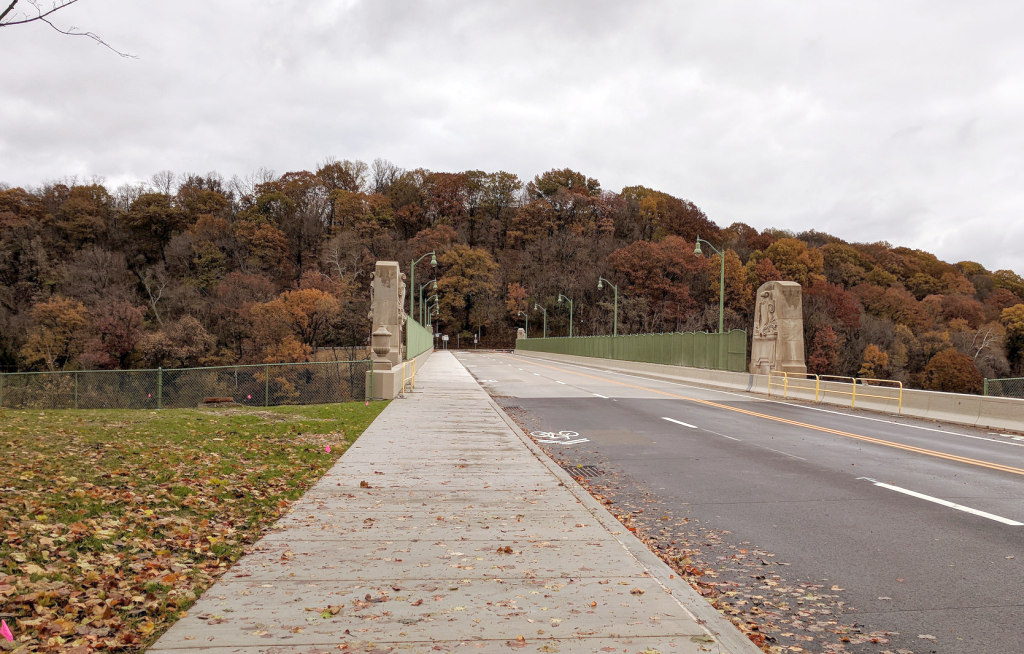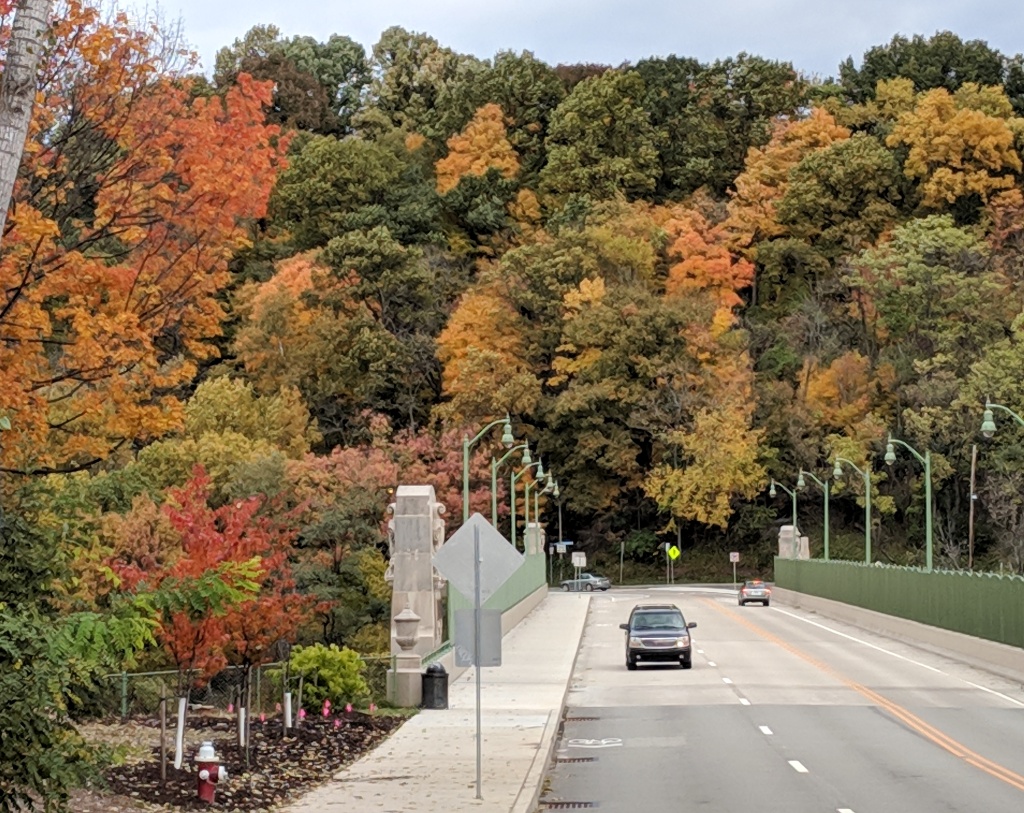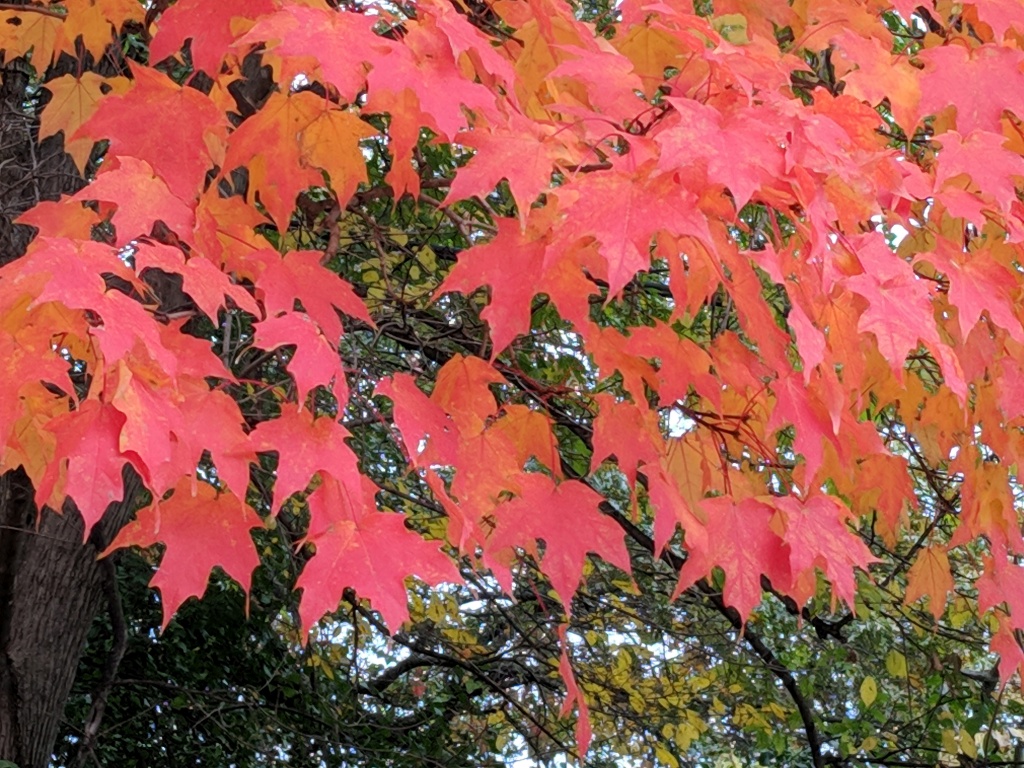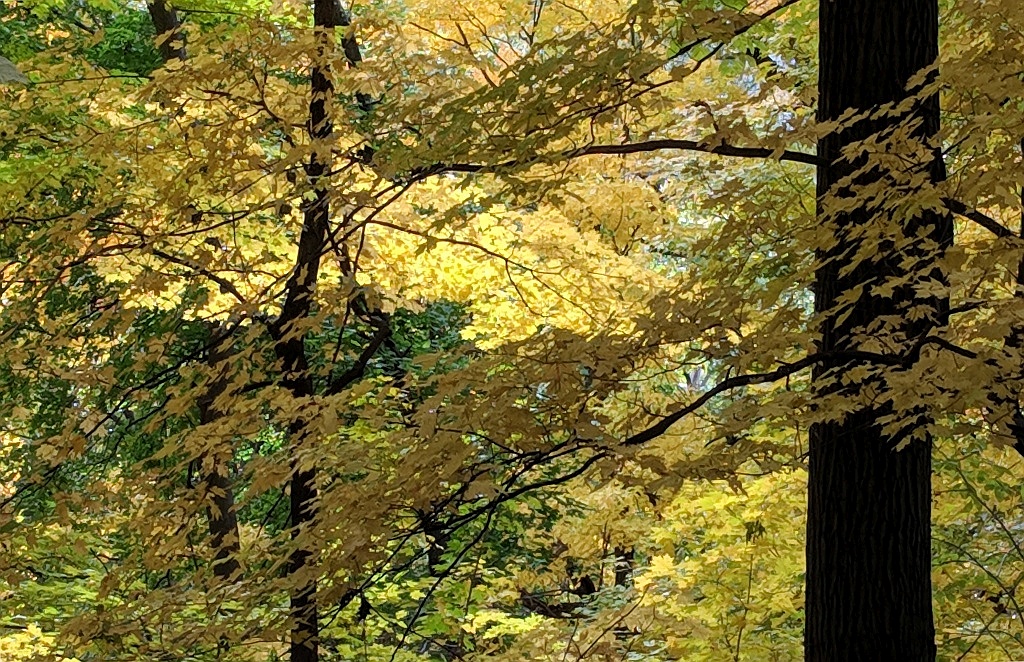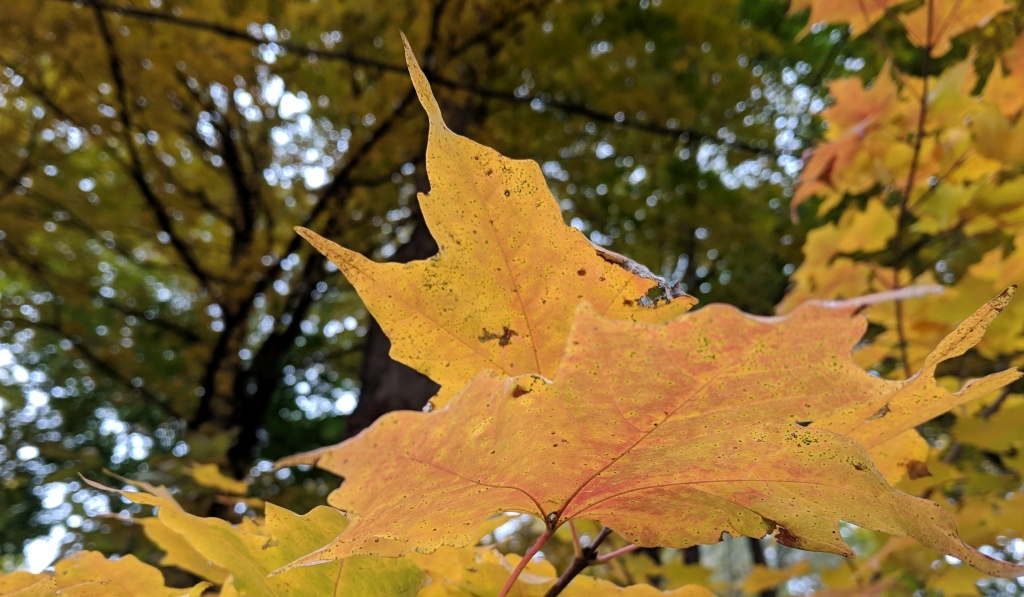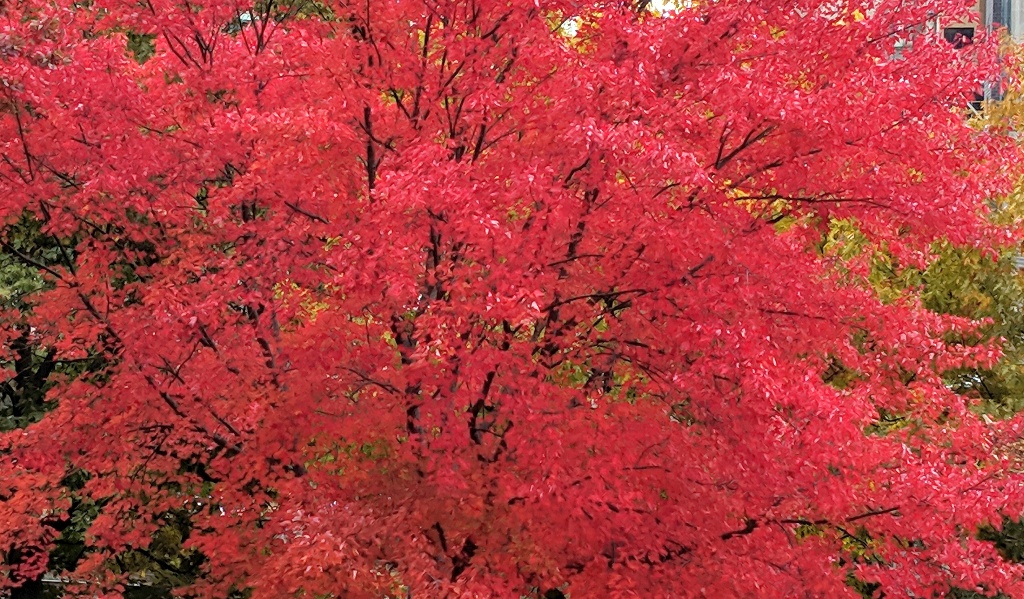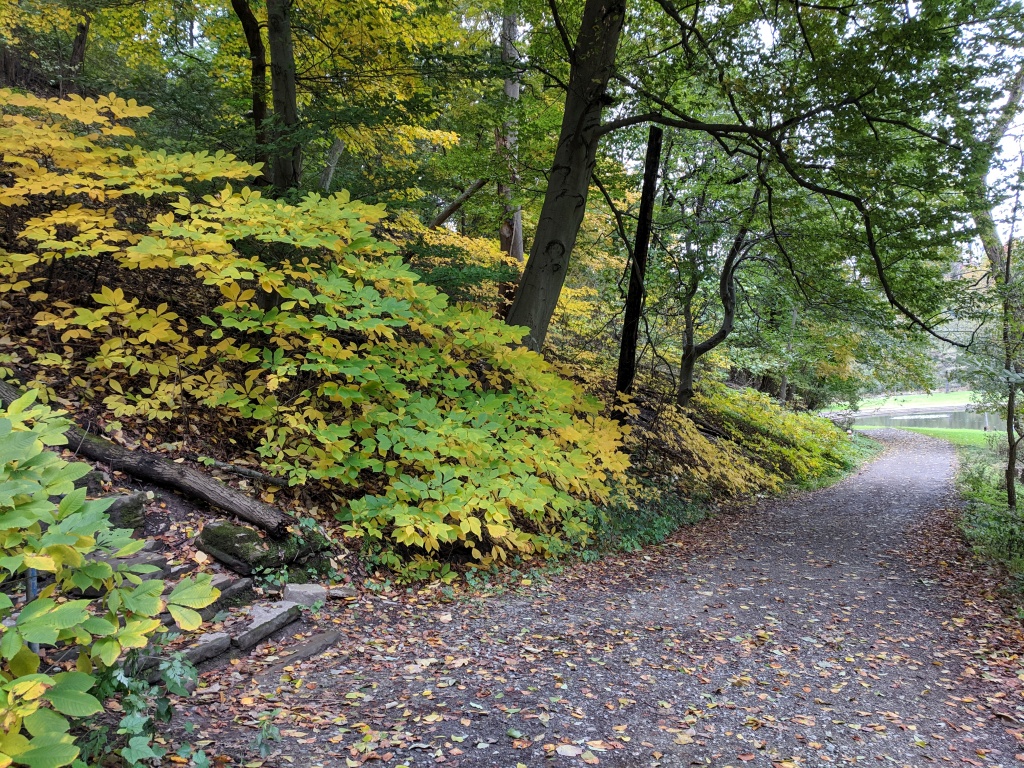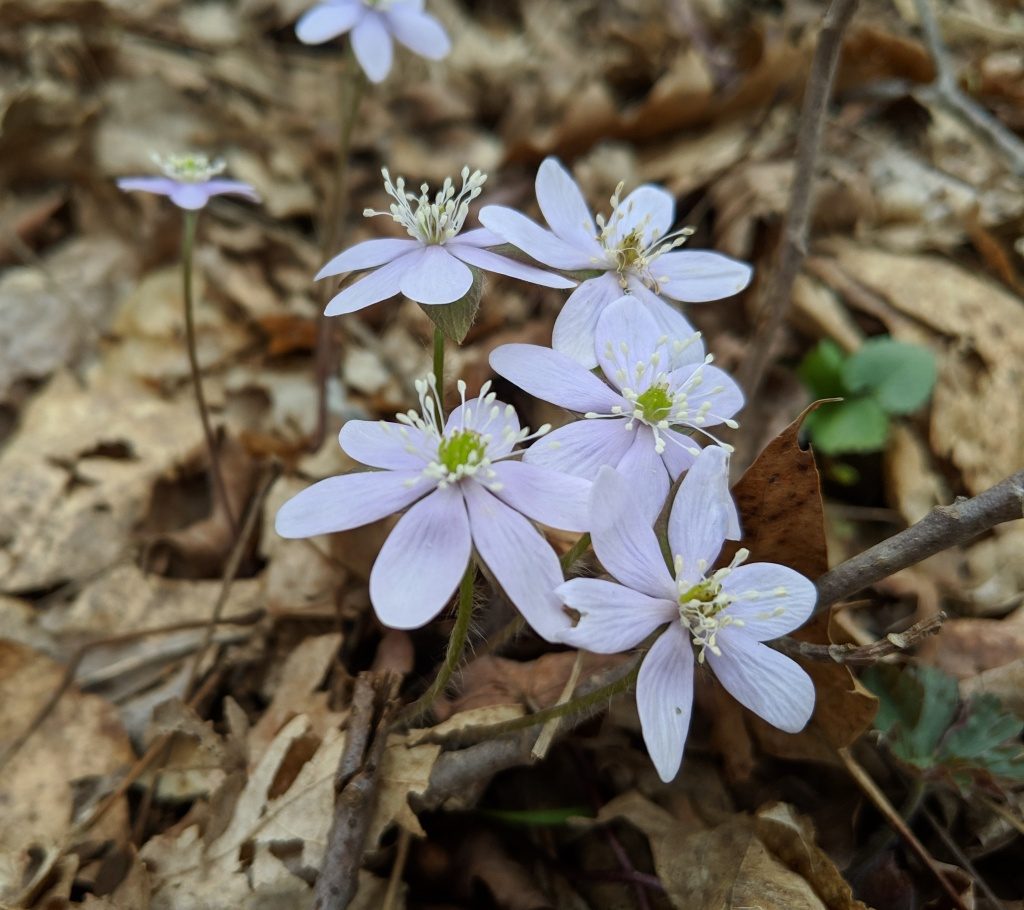
7 April 2019
What’s blooming in southwestern Pennsylvania this weekend?
Yesterday’s joint outing of the Botanical Society of Western PA and Wissahickon Nature Club found a lot of spring flowers at Cedar Creek Park in Westmoreland County, 6 April 2019.
Hepatica was blooming in shades of white, pink and blue. In the photo above, the leaves aren’t visible so I can’t tell if this plant is round-lobed (Anemone americana) or sharp-lobed (Anemone acutiloba) hepatica.
Harbinger of Spring (Erigenia bulbosa) was blooming along the valley trail. Did you know this plant is in the Carrot family?
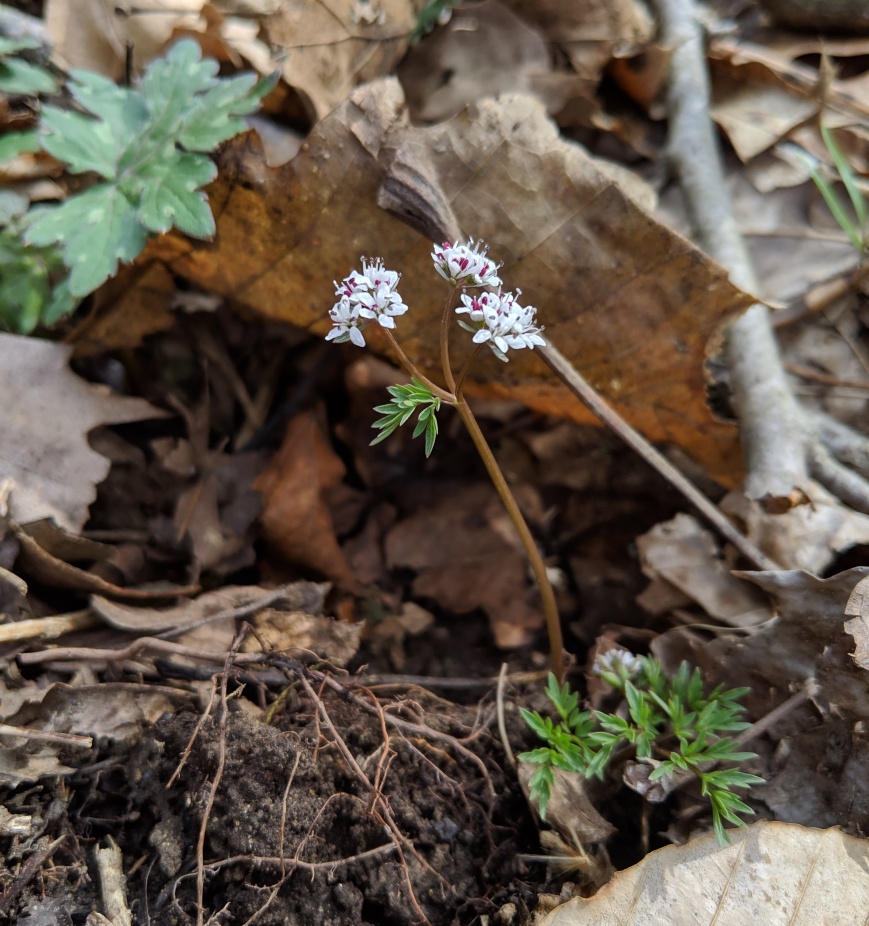
Snow trillium (Trillium nivale) covered the hillside beyond the last bridge …
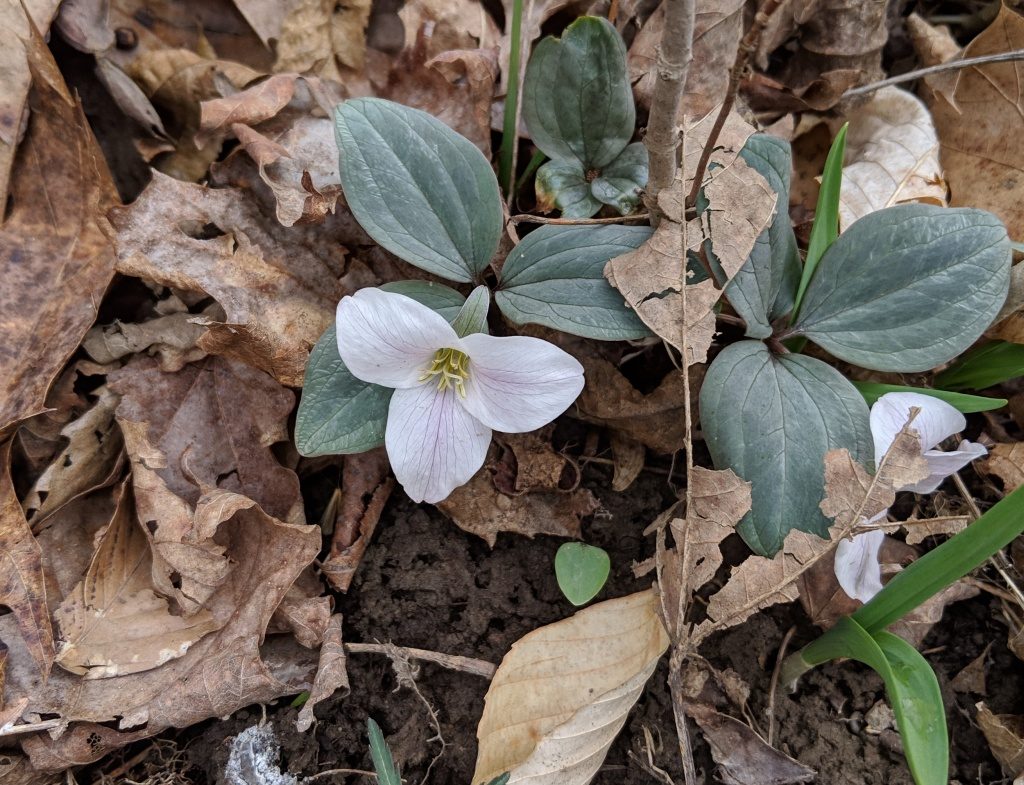
… and spicebush’s (Lindera benzoin) tiny yellow flowers were a nice surprise.
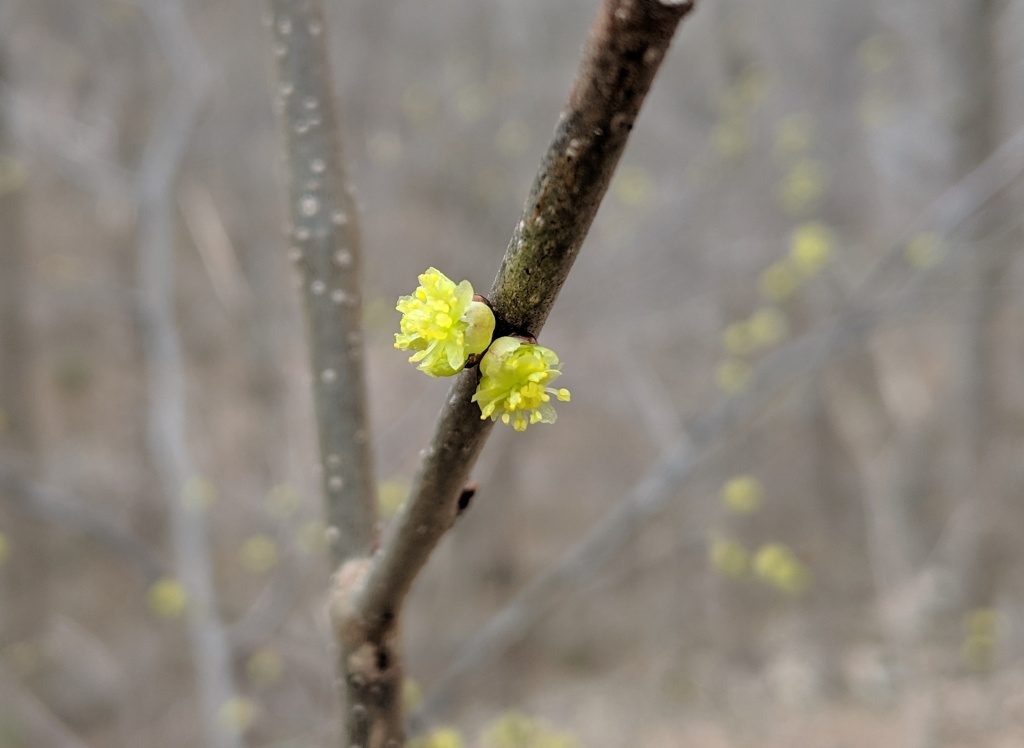
Most of the spring beauty was not in bloom but we found Carolina spring beauty (Claytonia caroliniana), a specialty at Cedar Creek shown below.
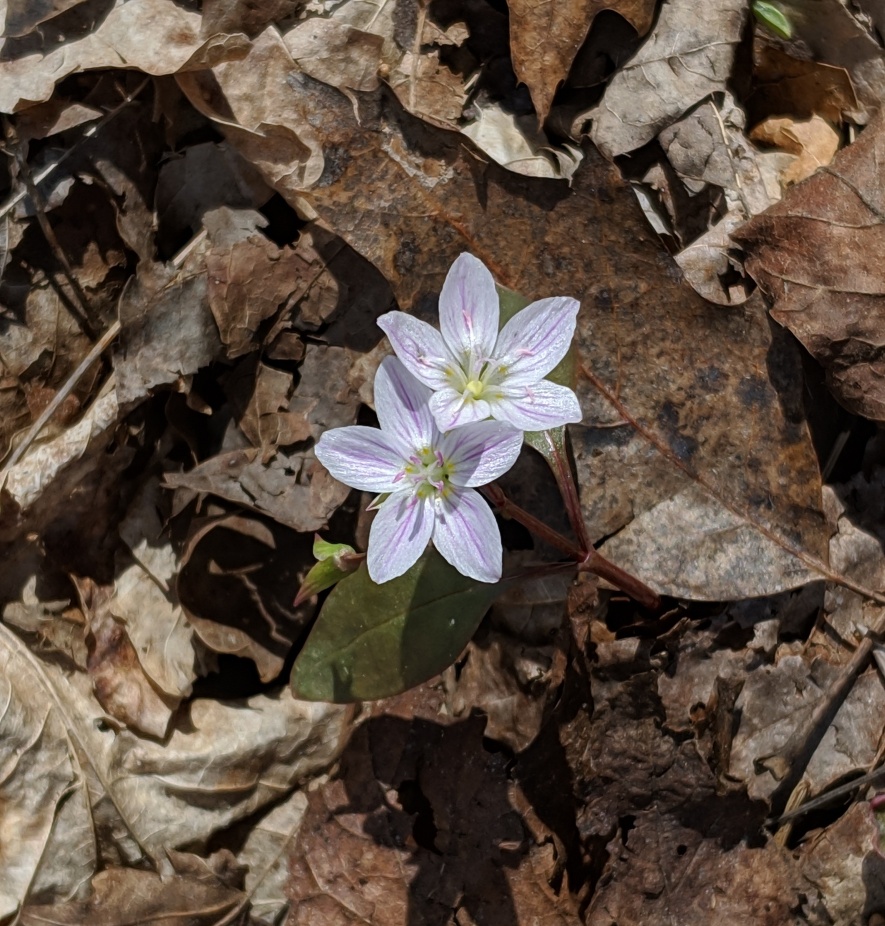
This bloodroot (Sanguinaria canadensis) was bright white by the bike trail. Its leaves are barely visible, clutching the stem, while a garlic mustard leaf tries to photo-bomb the bottom corner.
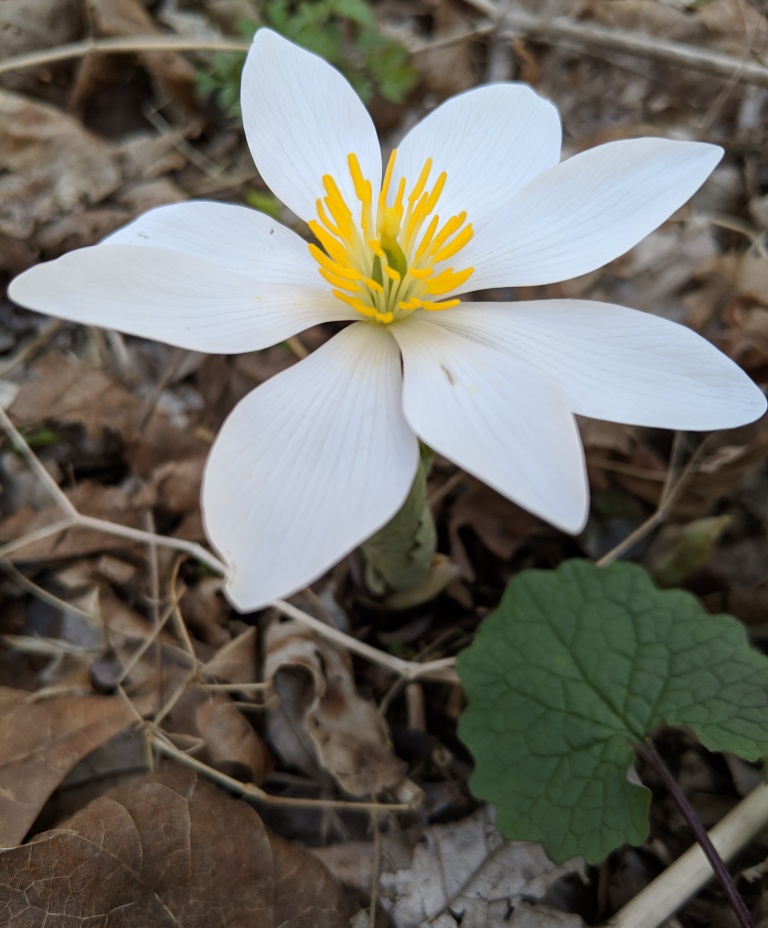
Meanwhile, how are the buckeye buds doing in Schenley Park? Some were unfurling on Friday 5 April 2019. Note the CORRECTION ABOUT BUCKEYES below!
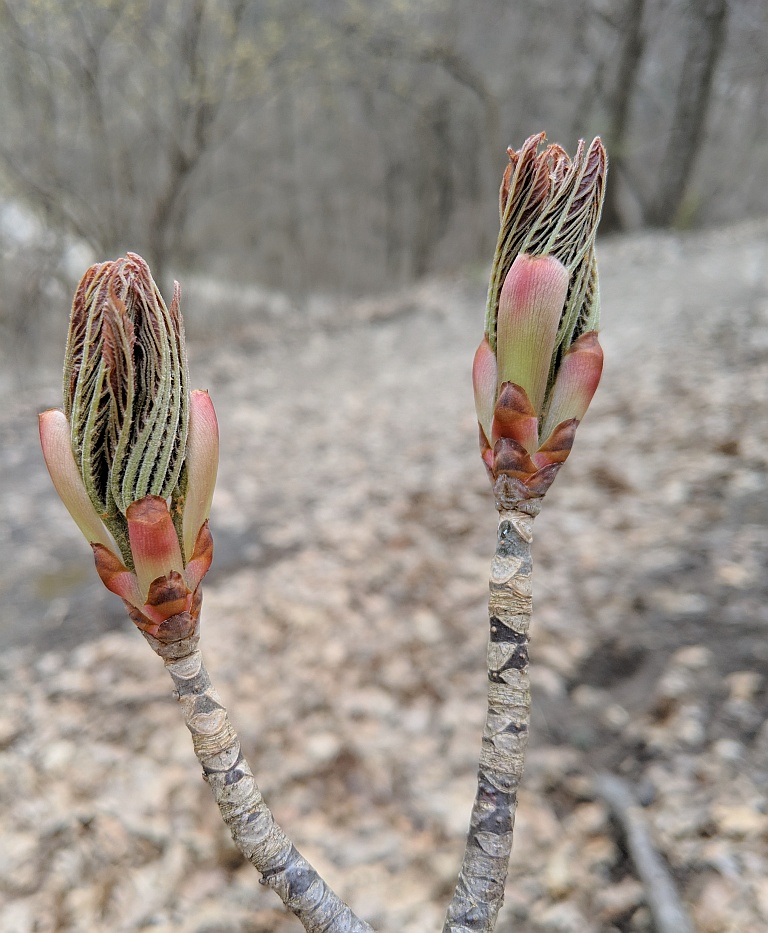
CORRECTION ABOUT BUCKEYES: Last week Stephen Tirone investigated the buckeye buds in Schenley and Frick Parks and learned that these are yellow buckeyes (Aesculus flava) not Ohio buckeyes (Aesculus glabra). Though Ohio buckeyes are more common in the wild, Pittsburgh’s parks are not “wild.” Schenley and Frick Parks were landscaped with ornamentals when the parks were established more than 100 years ago. Yellow buckeyes are often planted as ornamental trees and may be hybridized to produce showy flowers. So, yes, these are yellow buckeyes.
(photos by Kate St. John)
